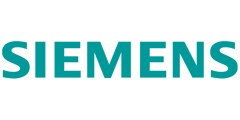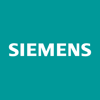The Aerospace and Defense (A&D) industry is undergoing a total transformation.
Companies that once competed on mechanical excellence now face a different reality: success depends on how well they integrate digital capabilities across design, manufacturing, validation, and certification.
The shift is already apparent in leading organizations. Model-based manufacturing and digital twins have moved from pilot programs to production floors. Digital threads now link requirements to delivery, creating unprecedented traceability for regulatory compliance. Adaptive production systems respond to supply chain disruptions in real time. These capabilities increasingly separate market leaders from followers.
Industrial AI and the Industrial Metaverse are advancing from proof of concept to scaled deployment. Early adopters report significant gains in first-time quality, reduced certification cycles, and accelerated innovation. The companies capturing these benefits share one trait: they've reimagined systems engineering for a software-defined world.
In this edition of Industry Signals, we discuss these trends, how companies are building smarter manufacturing strategies, and what systems engineering must now become to deliver on the software‑defined promise.
Key Developments & Insights
1. The Heightened Complexity of Aerospace Products
In the recent Talking Aerospace Today podcast episode, “The Rise of Software‑Defined Aerospace,” Todd Tuthill (Siemens VP of Aerospace, Defense and Marine) and Dale Tutt (Siemens VP of Strategy) pointed out that whereas twenty years ago engineers might have managed “maybe 100 interactions, all of which could be managed on a spreadsheet,” today, semiconductor chips alone expand the number of operations and interactions into hundreds of thousands. Moreover, potential for failure is huge: a single chip can embody “over 90,000 failure modes inside…Thus, traditional approaches to systems engineering need to be changed to enable more cross-domain collaboration and integration, allowing aerospace engineers to better comprehend the sheer scale of interactions and complexities of their products.”
2. Emerging Enablers: Digital Twins, Adaptive Production, AI & Metaverse
At the Paris Air Show 2025, Siemens showcased tools spanning digital threads, the digital twin, and adaptive production, plus newer innovations. Key themes at the show:
- Adaptive production is being called for in response to high variability in new product types (“drones and satellites”) and the need to respond more fluidly to changing materials, regulations, or customer demands.
- Industrial AI is positioned as a tool for “reliable, secure, and trustworthy solutions to optimize processes throughout product and production lifecycles…key strengths lie in the enhancement of human‑machine interaction” and helping overcome innovation and complexity challenges.
- The Industrial Metaverse offers immersive, virtual collaborative spaces where engineers can “gain even better comprehension of their products and processes and find solutions quicker in a risk‑free, immersive digital environment.”
3. Growing Pressure Around Product Lifecycle, Traceability, and Certification
It was also noted at the Paris Air Show that as systems become more software‑defined, companies are facing more demanding regulatory, safety, and environmental expectations. “Certification…[is] often more costly and time‑consuming than design. This can be made even more obstructive when product data is not easily accessible or connected to provide context for certification…To make certification more efficient, data from across the lifecycle must be more traceable.” Leaders at the show emphasized the need for digital threads, digital twins, and integrated data systems so that product, process, and compliance data is connected, accessible, and usable throughout design, manufacturing, and operation. 4. Model‑Based Planning & Smart Manufacturing
Siemens recently released the first blog post in a three-part series on the topics of model-based manufacturing, validating products and process plans, and optimizing products and processes across the lifecycle. In that posts, the author raised a few key points: - A&D manufacturers are shifting “from document‑based, sequential planning to model‑based manufacturing: A connected, digital thread approach that enables right‑first‑time production.”
- Many problems arise when design and manufacturing operate in silos, with manual handoffs. A model‑based approach enables “a shared digital foundation between engineering and manufacturing” so they can “collaborate in real time using consistent, up‑to‑date data.”
- Digital twins in these contexts include “production lines, tools and processes, enabling you to simulate and refine before anything physical is built.”
And important: validation must shift earlier to “soonest possible in the lifecycle” so that manufacturability, assembly, and process constraints (tooling, sequencing, bottlenecks) are identified before physical prototypes or production ramp.
Strategic Implications
Those in the A&D industries should consider:
- Reengineering Systems Engineering for Software‑Defined Products: Traditional systems engineering was built for mechanical / electromechanical systems. Today’s products have exponentially more software / electronics and internal interaction. Without holistic systems engineering, failure modes, integration, or safety issues may be missed.
- Investing in Data Infrastructure & Traceability: Certification, safety, and end‑of‑life are now central concerns; without connected, traceable data across design, production, operation, and decommissioning, compliance becomes costly and risky.
- Adopting Model‑Based Planning & Early Validation: Provides speed, precision, and predictability. Permits manufacturability checks, simulation of production before floor builds, and catches errors earlier.
- Enabling Flexibility and Adaptive Production: Markets, technologies, regulations and materials are moving fast. Being locked into rigid designs or linear processes is a liability.
- Exploring & Piloting Emerging Technologies Responsibly: When applied correctly, AI, digital twins, metaverse accelerate insight, reduce risk, and improve collaboration.
The shift to software-defined, digitally connected aerospace systems marks a technical evolution and a strategic inflection point. The next decade will be defined by our ability to integrate software, data, and sustainability into a coherent, agile system.
If you are looking for more content within the aerospace realm, we recommend checking out Siemens' Talking Aerospace Today podcast, which covers topics like digital transformation in aerospace factories and aerosystem architectures. We also recommend the World Economic Forum’s recent whitepaper “Global Aviation Sustainability Outlook 2025,” which goes into technology challenges, sustainability risks, and policy. That’s a wrap for this edition of Industry Signals. Have a report, use case, or event you'd like to see featured in an upcoming issue? Send a note via PM. We’re always looking to spotlight what’s shaping the future of industry and find recommendations from the Xcelerator Community especially valuable. Your insights and experiences continually shape Industry Signals.






